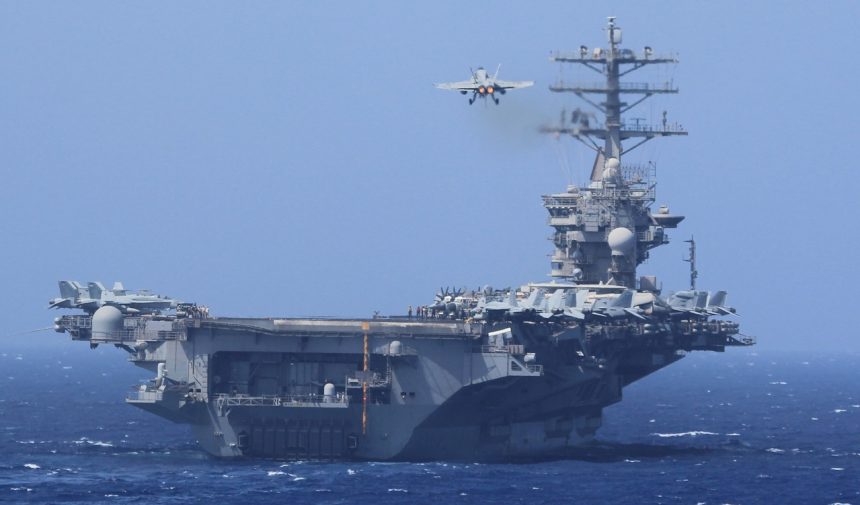The image in this post is interesting for at least two reasons. First it, shows an F/A-18E preparing to land on the flight deck of USS Nimitz (CVN 68) sailing in the 5th Fleet Area of Responsibilty from an unsual point of view: the one of an accompanying warship part of the Nimitz Carrier Battle Group.
Second, the Super Hornet is depicted with the afterburner lit. While pilots normally “walk the throttle”, to keep the desired airspeed, rate of descent and attitude, it’s quite rare for them to select the reheat during final approach. Usually, they push the throttle to the stops AFTER touchdown on the flight deck of the carrier so that they have the required thrust to take off again in case the arrestor cable snaps (something that, although rarely, has happened).
In this case, the pilot was either in the process of adding more power to keep the proper glide path or, more likely, about to execute a go around (“wave off”), as instructed by the “Paddles”.
As explained in an article we have published here at The Aviationist, from the last three quarters of a mile all the way to touchdown (“in the groove”) the pilots approaching a U.S. aircraft carrier can rely on LSO (Landing Signal Officers – radio callsign “Paddles”) talkdown. LSOs are skilled and experienced pilots whose job is to watch the deck-landing of all the airplanes and provide the pilots with radio guidelines to adjust the final phase of the approach, and complement IFLOLS (Improved Fresnel Lens Optical Landing System) and ICLS (Instrumental Carrier Landing System) visual information.
Instructions radioed to the pilots (extremely important also to prevent the pilot from concentrating on the deck, thus not paying as much attention to the optical landing system) are concise: “Little low”, “Little right”, “Power”, “Wave off”, etc. Even though it’s only two of the LSO team to be in contact over the radio with the plane (a duty one and a supervisor), on the special aft platform a team of five or six LSO-qualified pilots work on: at least one member for each embarked squadron, supporting the two CAG LSOs the whole crew depends on.










